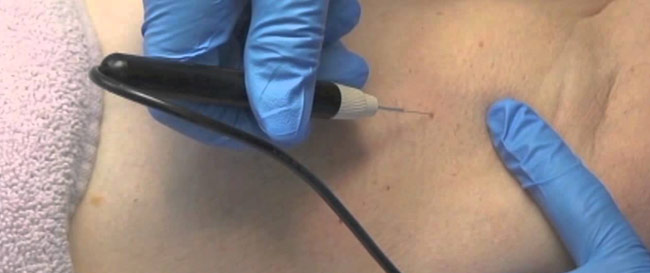Electrocautery, also known as thermal cautery, refers to a process in which a direct or alternating current is passed through a resistant metal wire electrode, generating heat. The heated electrode is then applied to living tissue to achieve hemostasis or varying degrees of tissue destruction.[1] Electrocautery can be used in various minor surgical procedures in dermatology, ophthalmology, otolaryngology, plastic surgery, and urology.
In electrocautery, the current does not pass through the patient; thus, the procedure can be safely used in patients with implanted electrical devices such as cardiac pacemakers, implantable cardioverter-defibrillators, and deep-brain stimulators.[2, 3, 4]
In contrast, electrosurgery is a group of commonly used procedures that utilize the passage of high-frequency alternating electrical current through living tissue to achieve varying degrees of tissue destruction.[1, 5, 6] Different forms of electrosurgery include electrocoagulation, electrofulguration, electrodesiccation, and electrosection. Electrosurgery produces electromagnetic interference, which can interfere with implanted medical devices.[2, 3, 4]
Electrosurgery is not a synonym for electrocautery but is often erroneously referred to as electrocautery in practice and literature.


